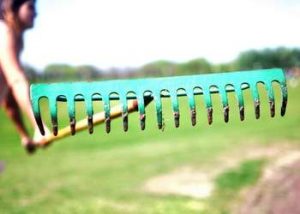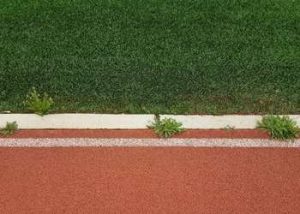Artificial grass is an excellent alternative to using natural grass in your yard. It reduces the amount of time and money you spend on maintaining your lawn, and it makes for a beautiful landscape with minimal upkeep.
However, there are some instances where artificial surfaces go flat, which may need a “fluffing up.”
The good news is that there are some simple tricks you can do to give your fake grass more depth, texture, and appeal! In this blog post, we’ll show you how to fluff up artificial grass so that it looks like the living green lawn that everyone wants!
Contents
Why Does Artificial Grass go Flat?
Artificial grass flattens out after time and becomes less like a plush carpet for several reasons, including:
- Artificial grass is usually flat in high-traffic areas, such as in public spaces or sports fields. This high traffic can cause the blades to sink into the ground.
- Artificial turf flattens because it doesn’t have roots to hold the soil down, so people, pets, or equipment can quickly move it.
- Incorrect installation of artificial grass.
- It also tends to go flat when exposed to heat over an extended period.
- Gaps in artificial grass joins can cause water to run underneath the carpet and saturate it.
Is it Possible to Make Artificial Grass Stand Up Straight Again?
The answer is YES. It’s definitely possible to make artificial grass stand up straight again; you can fluff it back up with some effort!
Now, some minor factors come into play.
For example, the height of your grass is a factor in how fluffed up it will be again! If you have tall grass (at least an inch long), then yes, it should stand back up straight if treated correctly.
Another factor would be what type of grass you have. There are multiple different types of artificial grass, some more fluffable than others (and vice versa).
The last and final factor is if the blades can be bent back into shape! Some grass blades may crack or break when attempting to turn them back into place. So, make sure beforehand if this will work or not.
The blade weight helps make artificial turf look natural and upright; therefore, heavier weights are better for more functional spaces like schools with playgrounds and running tracks.
How do you Fluff up Artificial Grass?
There are a few ways to fluff up your synthetic lawn once it becomes flat.
1. Use a Broom

You can also use an artificial grass rake if you have one. The advantage of using a rake is that you can use it with all lawn areas, which would not be possible if you were using a broom.
2. Use a power brush

There are different types of power brushes, some have stiff bristles for hard surfaces, and others have flexible bristles for softer surfaces such as carpeting and linoleum floors.
If you want to unflatten artificial grass, we recommend using a stiff bristle brush because they do a better job at getting out the dirt and loose particles from the surface of the turf.
3. Rinsing And Cleaning The Area

The objective here is to thoroughly rinse and scrub the area several times until it begins to look clean again.
After you’ve fluffed up artificial turf, be sure to sweep or power wash away any excess soil from grass blades.
It’s recommended to clean the artificial grass with a regular garden hose as power washers can cause damage to certain types of backing materials used in artificial grass.
4. Prevent Weeds And Debris

Weeds will eventually grow through the surface of your synthetic turf if they’re not removed entirely before installation.
Also, be sure to level out any bumps or dips in the soil so that matting isn’t an issue for future use with infill.
After installing new turf, sweep up excess particles from the area until no more falls onto the ground below.
Conclusion
I hope this blog post has been helpful for you and given you some tips on how to fluff up artificial grass.
I’d love to hear from you who have tried any of these methods or will be trying them in the future. Please feel free to comment below with your thoughts, questions, or experiences!
